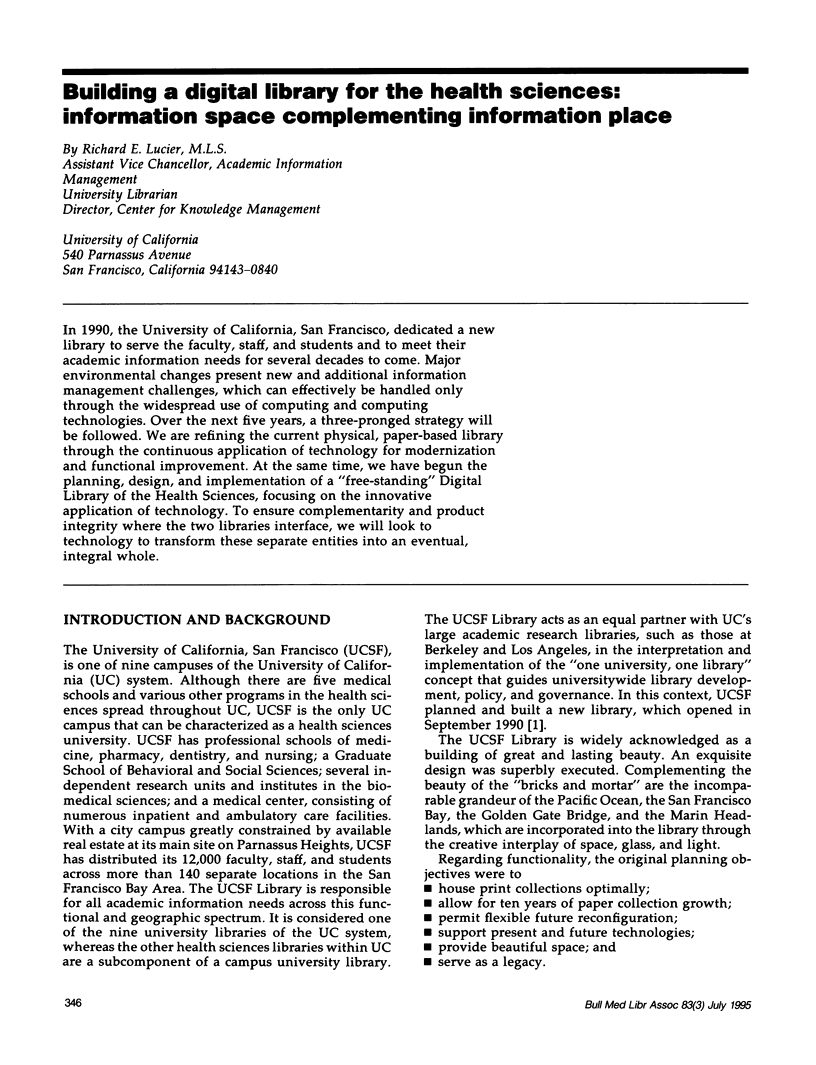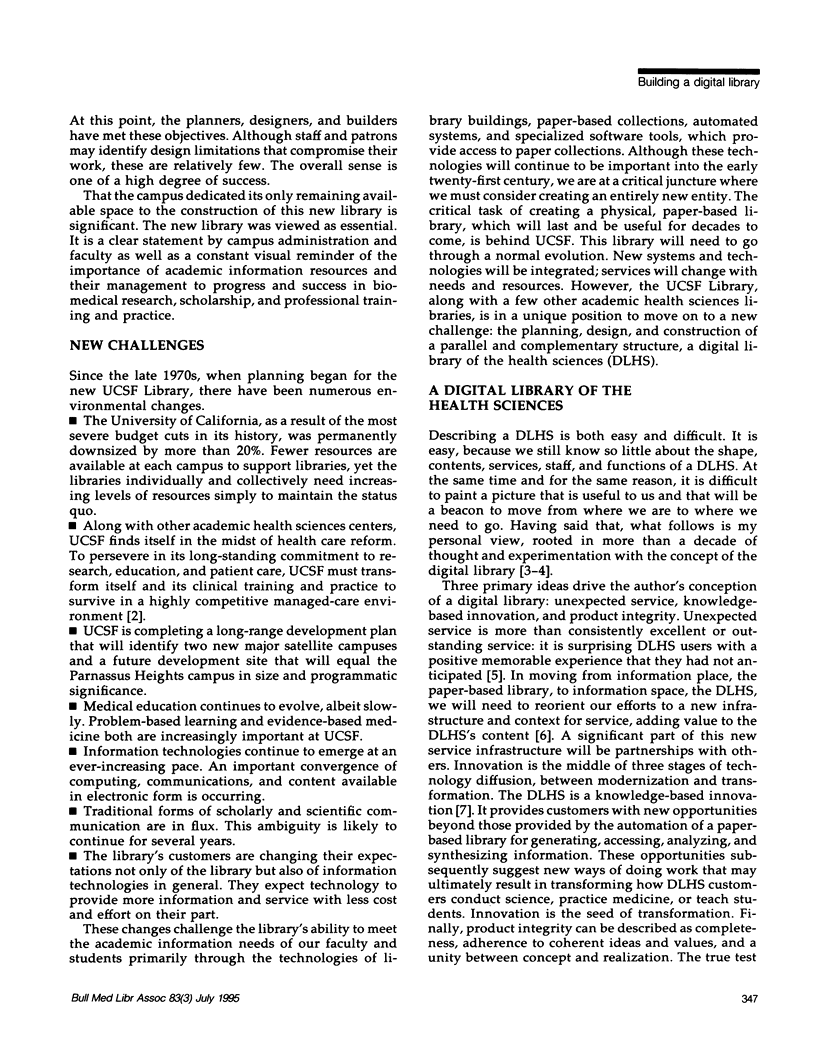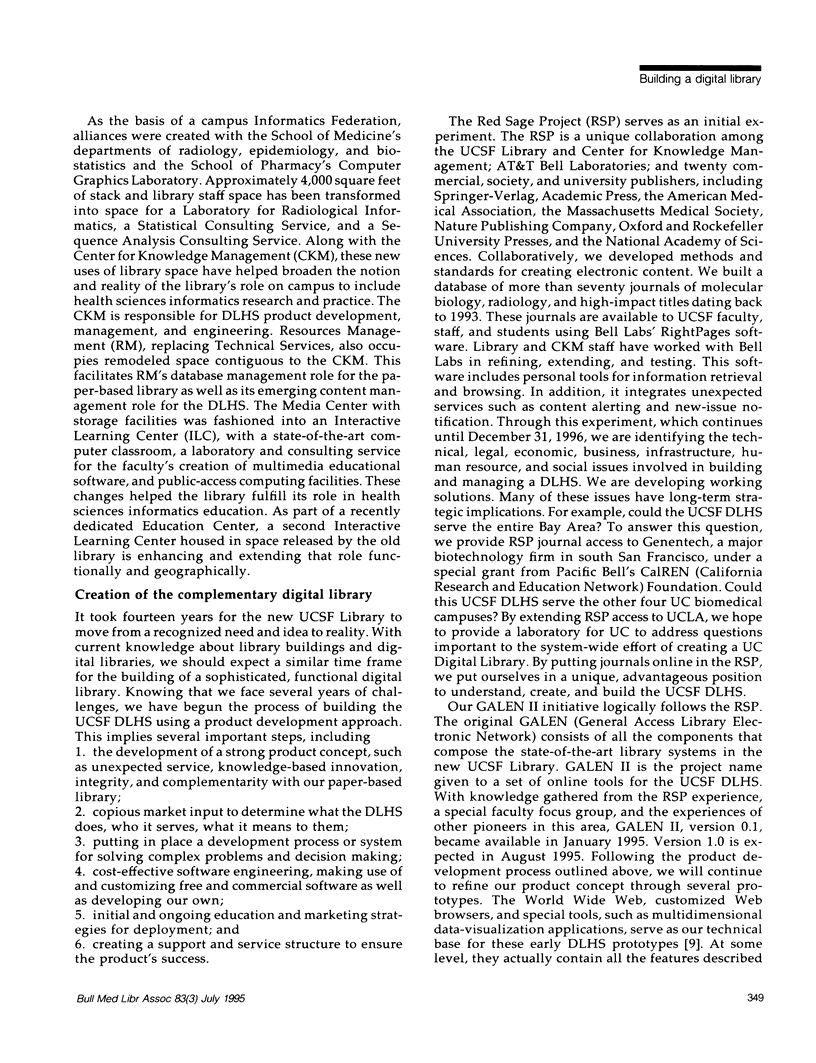Abstract
In 1990, the University of California, San Francisco, dedicated a new library to serve the faculty, staff, and students and to meet their academic information needs for several decades to come. Major environmental changes present new and additional information management challenges, which can effectively be handled only through the widespread use of computing and computing technologies. Over the next five years, a three-pronged strategy will be followed. We are refining the current physical, paper-based library through the continuous application of technology for modernization and functional improvement. At the same time, we have begun the planning, design, and implementation of a "free-standing" Digital Library of the Health Sciences, focusing on the innovative application of technology. To ensure complementarity and product integrity where the two libraries interface, we will look to technology to transform these separate entities into an eventual, integral whole.
Full text
PDF




Selected References
These references are in PubMed. This may not be the complete list of references from this article.
- Clark K. B., Fujimoto T. The power of product integrity. Harv Bus Rev. 1990 Nov-Dec;68(6):107–118. [PubMed] [Google Scholar]
- Cooper R. S. A library for the fifteenth through the twenty-first centuries. Bull Med Libr Assoc. 1991 Apr;79(2):147–158. [PMC free article] [PubMed] [Google Scholar]
- Lucier R. E., Matheson N. W., Butter K. A., Reynolds R. E. The knowledge workstation: an electronic environment for knowledge management. Bull Med Libr Assoc. 1988 Jul;76(3):248–255. [PMC free article] [PubMed] [Google Scholar]


